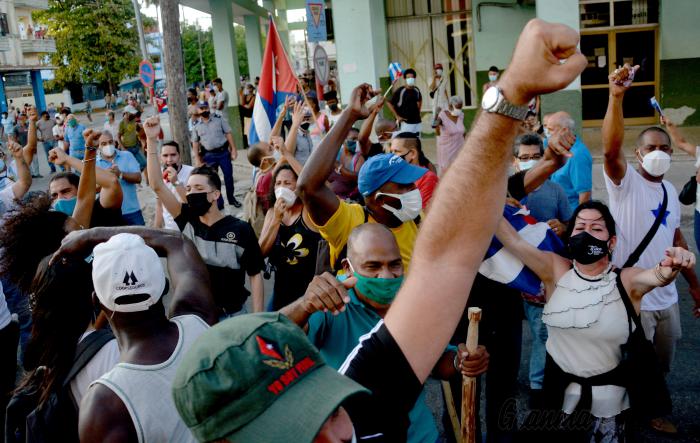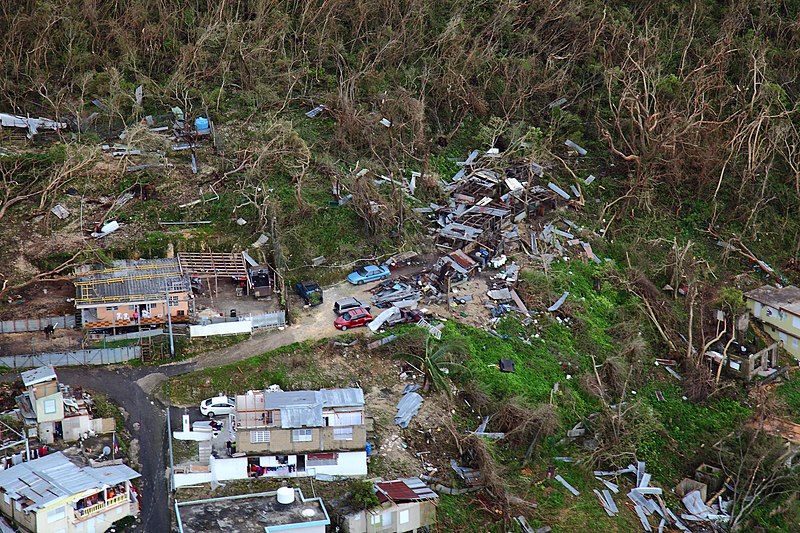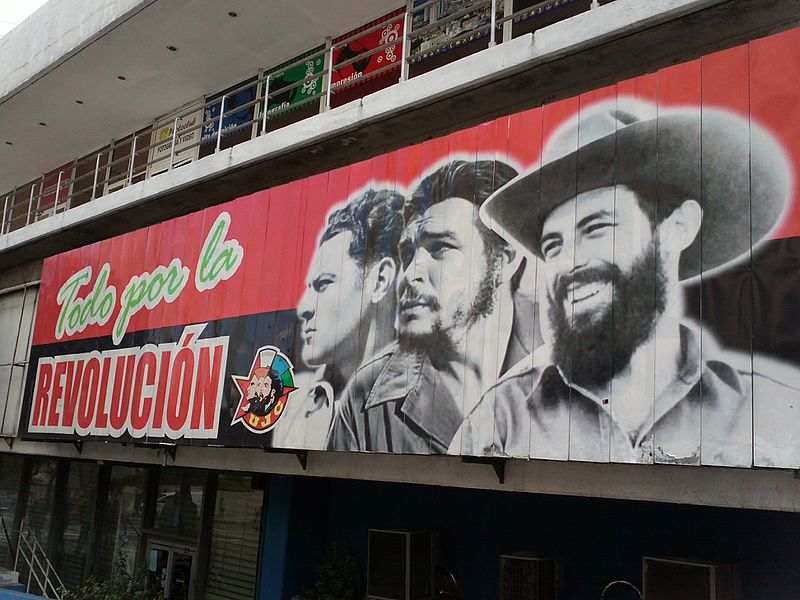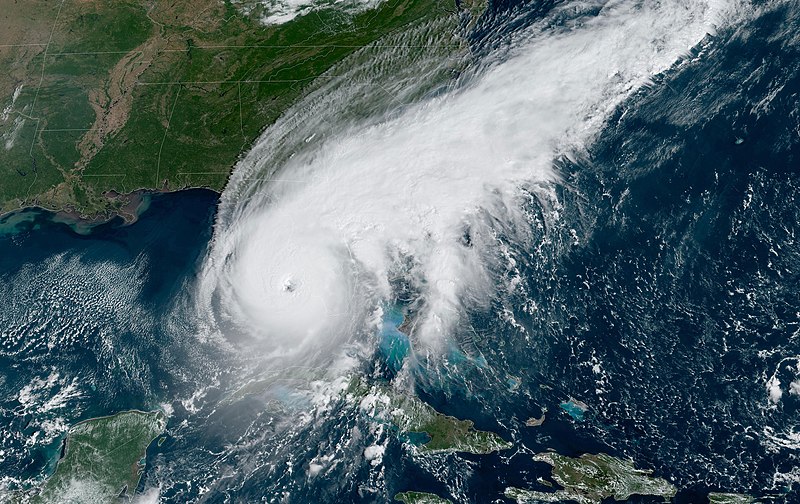On Tuesday 27 September, the Category 3 Hurricane Ian hit Cuba, lashing the island for seven hours with winds that reached gusts of 200 km/h. The eye of the cyclone was for an hour and a half over the city of Pinar del Río, capital of the province of the same name, which was the most affected by the hurricane, leaving scenes of widespread devastation.
Before leaving the island for Florida, Ian strengthened to Category 4, with winds of up to 250km/h, and also hit other western Cuban provinces with strong winds that toppled trees on a large scale in the capital Havana. The impact of the storm, described by many as the worst in 20 years, left the entire island without power as of Tuesday night.
Cuba, a frequent victim of tropical storms of all kinds, has an effective civil defence system to prevent damage, and has been recognised by the UN as “a model in hurricane risk management.” According to a statistical study by the Cuban Institute of Meteorology, a US citizen is 10 times more likely to die when affected by a hurricane than a Cuban. On this occasion, 50,000 people were evacuated before the arrival of the storm, mainly in Pinar del Río.
Thanks to these measures, the loss of life was minimal, two deaths have been reported so far, although the material damage was very extensive, particularly in Pinar del Río, affecting homes, commercial premises, companies, the tobacco harvest and others. Brigades from all over the country travelled to the province to collaborate in debris removal and recovery tasks.
But the truth is that Ian hit Cuba at a moment of particular weakness. The power outages had been getting worse in recent months and had caused sporadic protests in various humble neighbourhoods of Havana. The reason? A combination of the age of the electricity generation and supply equipment, almost all of which is at the end of its useful life, which cannot be replaced due to the lack of hard currency to import them; and also the lack of fuel, which is in turn related to the lack of hard currency to import it at a time when its prices have risen sharply.
To all this must be added the general state of deterioration of infrastructure in Cuba, including the precarious situation of a large number of homes in the capital. This is the result of a lack of investment, again due to the lack of foreign exchange to purchase the necessary materials and equipment. With the necessary resources, it would also be possible to renew the electrical distribution network, for example by burying part of the wiring, modernising the substations, acquiring more emergency generators for basic services, etc.
Deterioration
If we continue pulling the thread, we will see that the lack of foreign currency to import from the world market, in this case power generation equipment and fuel for it, has to do with other shocks that have hit the island in recent years. At least three can be cited: the tightening of the blockade by former US President Donald Trump (which President Joe Biden has not reversed), the impact of the COVID-19 pandemic on tourism (one of the island’s main sources of income), and the impact of the sanctions on Russia and the closure of airspace to Russian planes on tourism in Cuba after the pandemic.
 Although not widespread, last year's counterrevolutionary slogan “Homeland and life” (Patria y Vida) was heard at some of the recent protests / Image: Ricardo López Hevia
Although not widespread, last year's counterrevolutionary slogan “Homeland and life” (Patria y Vida) was heard at some of the recent protests / Image: Ricardo López Hevia
To this must be added factors that were already present before, such as the economic crisis in Venezuela that has limited the aid that the Bolivarian Revolution is able to offer Cuba; and the arrival of Bolsonaro to power in Brazil that meant the expulsion of Cuban doctors (the export of medical services is another of the main sources of income for the country).
Many in Cuba feel that bad things come in threes.
Obviously, the bureaucracy must be added to all these factors, with what it entails in terms of inefficiency, mismanagement, waste, corruption and privileges for a few at the expense of the majority.
It is not surprising then that on Thursday 29 September, when the blackout had lasted for 72 hours, protests took place in some neighbourhoods of the capital, such as Cerro, Arroyo Naranjo, Playa, among others, and according to some reports also in isolated pockets in Holguín and Matanzas. In addition to the problem of the general blackout, the situation in Havana was aggravated by the fall of numerous trees that damaged the power lines. In some cases the supply was restored but fell again due to short circuits caused by damage to the network. On Friday 30 September, the protests were repeated.
The protests reflect frustration due to the immediate situation of lack of electricity and in many cases also water (due to the lack of supply to the pumping plants), and the impact that this had on daily life; for example the damage to food stored in freezers (in the context of general shortages), the impossibility of using fans on hot nights, the general closure of supply stores, etc.
But the protests also reflected a growing discontent with the accumulation of problems prior to the storm (electricity cut offs, shortages, inflation), which is driving one of the largest migratory waves in the country's history (some 180,000 Cubans have arrived in the US in a year).
We must put the protests in their right dimensions. We are talking about groups of dozens, at most a hundred people, protesting in street corners, in some cases blocking the streets and banging pots and pans, demanding the restoration of electricity supply.
The situation for a couple of days was very confusing. Without an electricity supply, there was no way to use the media to inform the population of the progress of the process of restoring the national electricity system. All of this contributed to the protests. But it is no less true that there is a section of the population, including some in the poorest neighbourhoods of the capital, that has lost all confidence that the government is capable of solving the problems.
On the contrary, rather than problems being solved, the situation has been getting worse and for many there seems to be no light at the end of the tunnel. The government's economic measures, such as the January 2021 Monetary Reorganisation, have only worsened the situation.
This was the breeding ground in which the 11J protests took place last year. Those were politically capitalised upon by the counterrevolution, although they stemmed, in part, from a legitimate discontent of a sector of the population that includes many in the poor neighbourhoods, hardest hit by the crisis.
In the protests of the last two days, people shouted mainly: “bring back electricity", but also in some cases “Freedom!", and some chanted the slogan of the counterrevolution “Homeland and life” (Patria y Vida), although this was not the most widespread. The same Thursday, 29 September, state officials went out to offer explanations and the protests calmed down, in other cases officials were shouted down.
Referring to the protests, the Party secretary in Havana, Luís Antonio Torres Iribar, stated: “We had to face isolated situations in the province where there were people’s complaints about the water situation, the electricity situation, and the loss of food due to lack of electricity. We consider these complaints fair.”
Danger facing the revolution
The protests, so far, do not seem to go further and their number is quite small. On Friday, electricity supply had already been restored to 59 percent of users in the capital, and the situation is expected to return to normal by the weekend.
 The impact of Hurricane Maria on Puerto Rico gives an indication of how a capitalist Cuba would deal with natural disasters / Image: U.S. Customs and Border Protection
The impact of Hurricane Maria on Puerto Rico gives an indication of how a capitalist Cuba would deal with natural disasters / Image: U.S. Customs and Border Protection
Magnifying the scope of the protests, as the counterrevolution and the international capitalist media do (while systematically ignoring, for example, the tens of thousands protesting in Haiti) would be a mistake. But it would also be a serious mistake to underestimate them. The danger is that in the face of a serious situation of economic deterioration and scarcity, the legitimate discontent of a sector of the population will be capitalised upon once more by the counterrevolution and instrumentalised to force a movement that leads to capitalist restoration in Cuba.
Let's be clear. A capitalist Cuba would not be a sovereign country capable of providing its citizens with an abundance of goods. On the contrary, a capitalist Cuba would be a country de facto colonised by US imperialism, in which inequalities would grow massively, in which the achievements of the revolution in areas such as housing, education and health would be destroyed, and in which the problem of shortages for the poorest, would in fact worsen.
You only have to look at other Caribbean islands to understand. Take Puerto Rico. Just a few years ago, Hurricane Maria caused a widespread blackout on the island, from which it only fully recovered after 11 months. The recent hurricane Fiona (less powerful than Ian) also caused blackouts that have lasted over a week. Among the aggravating causes here is the privatisation of the electricity service to the multinational LUMA, the squandering of money from reconstruction funds controlled by the US, the blockade of a fuel tanker for violating the colonial Jones Act (which requires that all traffic between USA and PR is carried out only with US-flagged ships), etc.
A capitalist Cuba would be a mix between Puerto Rico, Haiti and the Dominican Republic: subject to imperialist domination, mass poverty, enormous inequality, destruction of the public health and education system, mass migration.
An internationalist, socialist solution
What is the solution? The problems facing the Cuban Revolution have one origin: the isolation of the revolution in a backward country. Even bureaucracy, ultimately, is the result of this isolation (as was the case with the rise of bureaucracy in the USSR).
 We must defend the Cuban revolution unconditionally, but also break its isolation with proletarian internationalism / Image: Tumpatumcla~commonswiki
We must defend the Cuban revolution unconditionally, but also break its isolation with proletarian internationalism / Image: Tumpatumcla~commonswiki
In Cuba, revolutionaries must fight the bureaucracy, because its very existence is a threat to the revolution and because important sectors of it are pushing in the direction of the restoration of capitalism “à la China” or “á la Vietnam.”
But above all it is necessary to adopt an internationalist point of view. The fate of the Cuban Revolution is linked to the advance of the socialist revolution, first of all in Latin America, but also in the advanced capitalist countries of Europe and the US.
Someone might say that this is utopian, that “realistic” solutions are needed “here and now”. Concessions to the market? Opening up to foreign investment? Private sector development? Some of these measures may be necessary, as a forced step back, but when implemented they inevitably corrode the planned economy from inside and undermine the foundations of the revolution.
But, is it really utopian to speak of a socialist revolution today? We are in a period of senile crisis of capitalism, the capitalist world is once again entering a deep recession that is already fueling class struggle. The recent uprising in Sri Lanka, the insurrectionary processes at the end of 2019 in Ecuador and Chile, the national strike in Colombia a year ago, the national strike in Ecuador a few months ago, the continued heroic movement of the masses in Haiti. Time and time again, the masses have shown that they are willing to fight and sacrifice themselves to put an end to exploitation.
But it’s not just in countries dominated by imperialism that we see a growing questioning of capitalism. We are witnessing a union organising drive in the US, a strike wave in Britain, and everywhere we see a build-up of discontent and political polarisation (yes, to the right, but also to the left).
What is missing? In all these processes, the factor that was absent was that of a revolutionary leadership up to the tasks posed, that could lead our class to victory.
The Cuban revolution must join this broad international current. Unfortunately, the foreign policy of the Cuban leadership seems to be inspired more by geopolitics and amorphous “anti-neoliberalism” than by the idea of socialist revolution. In the case of the Venezuela Revolution, it was necessary to stress the need to emulate the example of the Cuban Revolution itself, that is, the need to abolish capitalism as the only way to authentic national liberation. Unfortunately the opposite was done.
Finally, it is necessary to point out that the increase in extreme weather events is also due to climate change caused by the capitalist thirst for short-term profits. If we don't put an end to the capitalist system, it will put an end to human civilization on the planet.
We don't have all the time in the world. A sense of urgency is necessary. Defending the Cuban Revolution is a duty and that defence is unconditional. We must fight imperialist aggression and attempts at capitalist restoration, wherever they come from. But at the same time we must clearly say that the way out of the problems facing the revolution is to fight the bureaucracy with workers' democracy and to break Cuba’s isolation with proletarian internationalism.
1 October, 2022

